Ways to Protect Yourself from Creative Content Theft
A few weeks ago, my friend Michelle (and her awesome Etsy shop) was the victim of content theft by an SEO marketer. The incident was quickly resolved when Michelle sent a private message to the perpetrator, kindly asking that she refrain from using Michelle’s product images in a negative light. But the act of a shameless marketing professional using a photo that didn’t belong to her, and without asking for permission to use it on her own social media channels, really struck a nerve with me. The audacity!
As it turns out, this is an all-too-common trend that marketing professionals (or anyone running an online business) are guilty of: stealing and reusing content that does not belong to them. And it has to stop.
Shortly after the incident, I conducted a small poll among my creative colleagues, including many SBC contributors, and the results were astounding. Nearly every photographer, writer, videographer, and graphic artist I’m connected to has some kind of horror story regarding their creative property being stolen online by others.
There’s my long-time associate and friend Chuck Miller from Albany, NY who shared that he has endured several instances of plagiarism during his writing and photography career, including an experience with a major brand who ended up paying him royalties for the unauthorized use of two of his photos during an NBA game. A few phone calls provided positive results, but it didn’t come without a lot of unnecessary stress and hassle. Another time, his written work was stolen by a publisher.
“I was working for a music magazine, and had written a book on being an introductory record collector (how to look for this and that at any record show or flea market),” Chuck recalled to me over Facebook Messenger. “The publisher took a whole chunk of my book, republished it in an Elvis Presley collector’s guide, while conveniently leaving my name out, but not leaving out references to my book, making it confusing for people who were wondering where all the references came from. I showed the publisher I was wise to them. They showed me a tiny clause in my contract that said they could do whatever they wanted with anything I wrote for them. That was the last time I worked for that magazine. Ever.”
Chuck and Michelle are hardly alone in these experiences. As I dug in further, it became clear that this phenomenon affects professionals across all fields–from academia where several of my friends and colleagues have had their programs and works stolen by other academics to writers, musicians, and artists who have literally quit their jobs over the matter.
While having your work stolen and used to benefit someone else or their business can be frustrating and leave you wanting to never share your work online again, it shouldn’t deter you from making your pieces publicly available. I spoke with SBC Web Designer, SEO Specialist, and Marketing Extraordinaire Kelly Gleason on the prevalence of pirated creative content, and she wanted to help me, and all of our readers, better understand how to protect ourselves from content thieves. Here are three steps Kelly recommends:
1. The easiest way to settle most disputes is to contact the offending person or brand directly. A concise message is perfectly fine here, informing them that the shared work belongs to you — ask for the content to be removed, credit be given, or that they compensate you for its use. Include (and save a copy of) both the plagiarized content and your original publication of it along with the dates each was shared. Smaller publishers can often be contacted directly through their social media account, whereas bigger publishers may need to be contacted via specific channels (usually available via a contact or legal page on their website).
While plagiarism can feel very personal, it is helpful to remember when reaching out that the person or brand’s intent is often not malicious. Individual publishers are sometimes just not aware of the use restrictions that apply to content shared online, whereas bigger publisher accounts can be managed by multiple employees who may still be in the learning process. Corners can be cut when they shouldn’t be and content gets published erroneously.
2. Most publishers will respond to your request and act appropriately; however, there is the chance that they may not. Depending on where the work is published, you can take steps to have it removed from search engines, websites, and/or social media. Search engines like Google offer users a way to report DMCA violations – they evaluate all reports and “consider blocking, limiting, or removing access” to offending content. Likewise, Instagram, Facebook, and other social platforms provide forms for content creators to report copyright violations. Again, documentation and screenshots are necessary; accounts found to be in violation can be restricted or removed from each platform.
3. If the publisher has ignored or declined requests that they remove or credit your work, you can take legal action. I would recommend this as an absolute last step as it can be expensive and time-consuming, but it may be worth your while depending on the damage their plagiarism has caused. Contact a trusted lawyer to help you draft a Cease-and-Desist letter and discuss next steps if the publisher refuses to comply.
Have you had your work stolen and used by others online? Share your examples in the comments below or send us an email to socialbcreative419@gmail.com. We’d be happy to provide you with more advice on how to protect you and your work.






